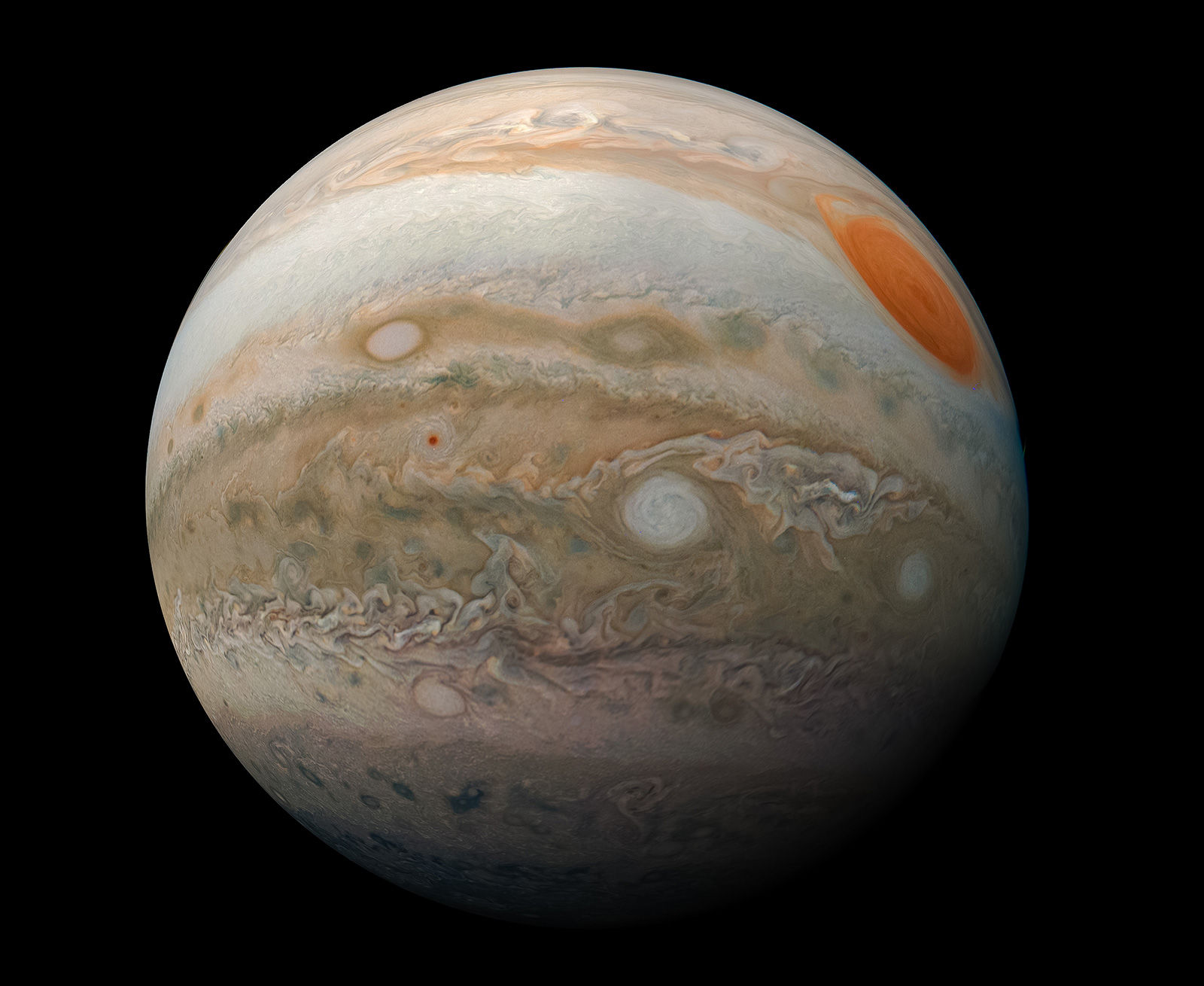Behold! Jupiter Is a Breathtaking 'Marble' in This NASA Juno Photo

You've never seen Jupiter look like this.
This image is a composite of just three photographs snapped by NASA's Juno spacecraft, which has been orbiting the gas giant for nearly three years.
The photographs used to construct this image were taken on Feb. 12 between 12:59 p.m. EST and 1:39 p.m. EST (1759 and 1839 GMT), during the spacecraft's 17th science "perijove," the maneuver that pulls Juno close to Jupiter in its off-center orbit.
At the time it took the photographs, Juno was between 16,700 miles and 59,300 miles (26,900 and 95,400 kilometers) away from the cloud tops that make up Jupiter's apparent surface and are so striking in this image.
The image is stunning in its near complete-disk image of Jupiter, particularly highlighting its southern hemisphere. It also shows off the massive storm known as the Great Red Spot, the most distinctive feature of that hemisphere.
The $1.1 billion Juno mission, which launched in August 2011, carries a camera known as JunoCam. But unlike the cameras on many NASA missions, JunoCam isn't part of the mission's science package. Instead, its goal is to bring the mission to the public. To that end, all its imagery, including this photograph, is processed by volunteer space fans, who bring a new depth to the data.
- In Photos: Juno's Amazing Views of Jupiter
- Get Lost in Jupiter's Marbled Clouds with This Awesome NASA Photo
- Dolphin-Shaped Cloud Swims Across Jupiter in This Awesome NASA View
Email Meghan Bartels at mbartels@space.com or follow her @meghanbartels. Follow us on Twitter @Spacedotcom and on Facebook.
Get the Space.com Newsletter
Breaking space news, the latest updates on rocket launches, skywatching events and more!
Join our Space Forums to keep talking space on the latest missions, night sky and more! And if you have a news tip, correction or comment, let us know at: community@space.com.

Meghan is a senior writer at Space.com and has more than five years' experience as a science journalist based in New York City. She joined Space.com in July 2018, with previous writing published in outlets including Newsweek and Audubon. Meghan earned an MA in science journalism from New York University and a BA in classics from Georgetown University, and in her free time she enjoys reading and visiting museums. Follow her on Twitter at @meghanbartels.









